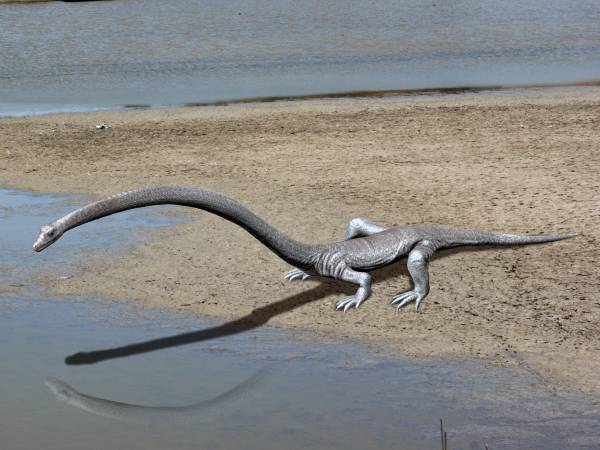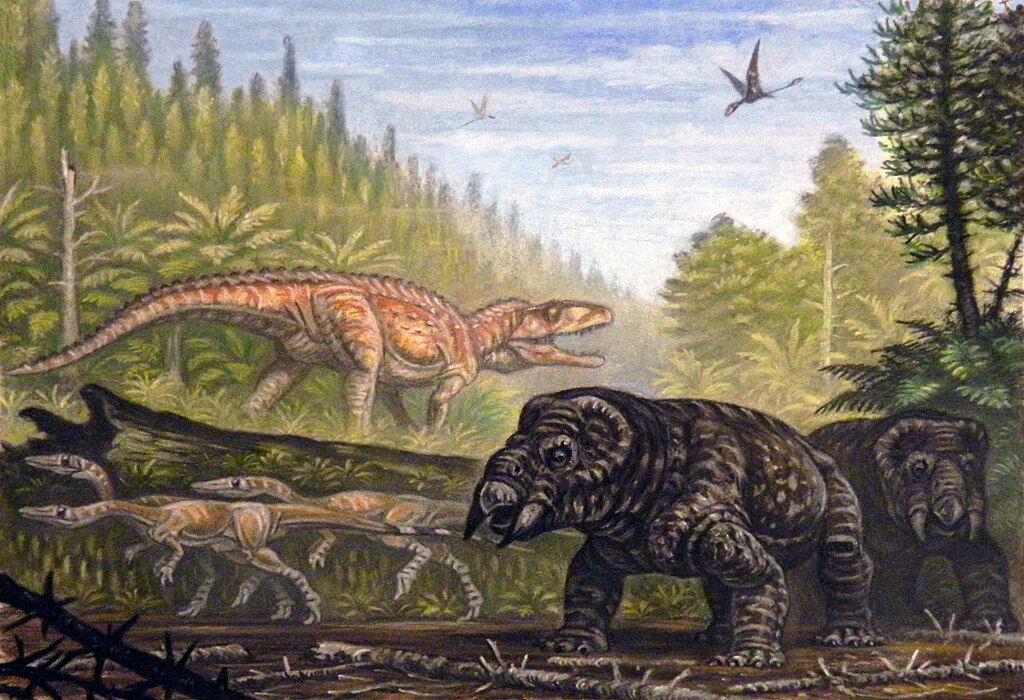Picture this: the first dinosaurs strutting across ancient landscapes, proud as modern-day peacocks. But they weren’t alone. While these “terrible lizards” were just finding their feet in the Triassic world, some truly bizarre creatures were already calling Earth home, and others were evolving right alongside them. What shared the planet with our beloved dinosaurs wasn’t always what you’d expect. From sail-backed reptiles like Dimetrodon to crocodile-like archosaurs that scurried on two legs, the Triassic was packed with evolutionary oddities. Giant amphibians lounged in swamps, while armored creatures resembling walking tanks plodded across the land. In the skies above, the first pterosaurs were beginning to master flight, adding yet another layer of strangeness to the mix. These weren’t sideshow acts to the dinosaurs—they were competitors, predators, and survivors in their own right. Together, they paint a picture of a world far stranger and more diverse than the dinosaur-centered story we usually imagine.
The World Before Dinosaur Domination

When dinosaurs first appeared around 230-233 million years ago during the Late Triassic, they were actually quite small and relatively uncommon. The world belonged to someone else entirely. Reptiles, especially archosaurs, were the chief terrestrial vertebrates during this time. A specialized group of archosaurs, called dinosaurs, first appeared in the Late Triassic but did not become dominant until the succeeding Jurassic Period.
Pseudosuchians were far more ecologically dominant in the Triassic, including large herbivores (such as aetosaurs), large carnivores (“rauisuchians”), and the first crocodylomorphs (“sphenosuchians”). Think of it like a bustling neighborhood where dinosaurs were the new kids on the block, while the established residents had already claimed the best real estate.
Flying Reptiles That Weren’t Quite Right

Pterosaurs are an extinct clade of flying reptiles in the order Pterosauria. They existed during most of the Mesozoic: from the Late Triassic to the end of the Cretaceous (around 220-225 million to 66 million years ago). Pterosaurs are the earliest vertebrates known to have evolved powered flight. These weren’t birds, and they certainly weren’t bats. Their wings were formed by stretching skin membranes from their ankles to a dramatically elongated fourth finger.
Early pterosaurs like Eudimorphodon and Peteinosaurus were quite small with wingspans of less than three feet. But what made them truly strange was their combination of reptilian features with flight adaptations that seemed almost alien. Rhamphorhynchoids were the first pterosaurs, and they are found in deposits from the Late Triassic Epoch (approximately 237 million to 201 million years ago). Genera of this group include Eudimorphodon and Peteinosaurus, both found in Italian Triassic deposits; these had wingspans of less than 1 metre (3.3 feet).
The Beaked Pig-Lizards with Tusks
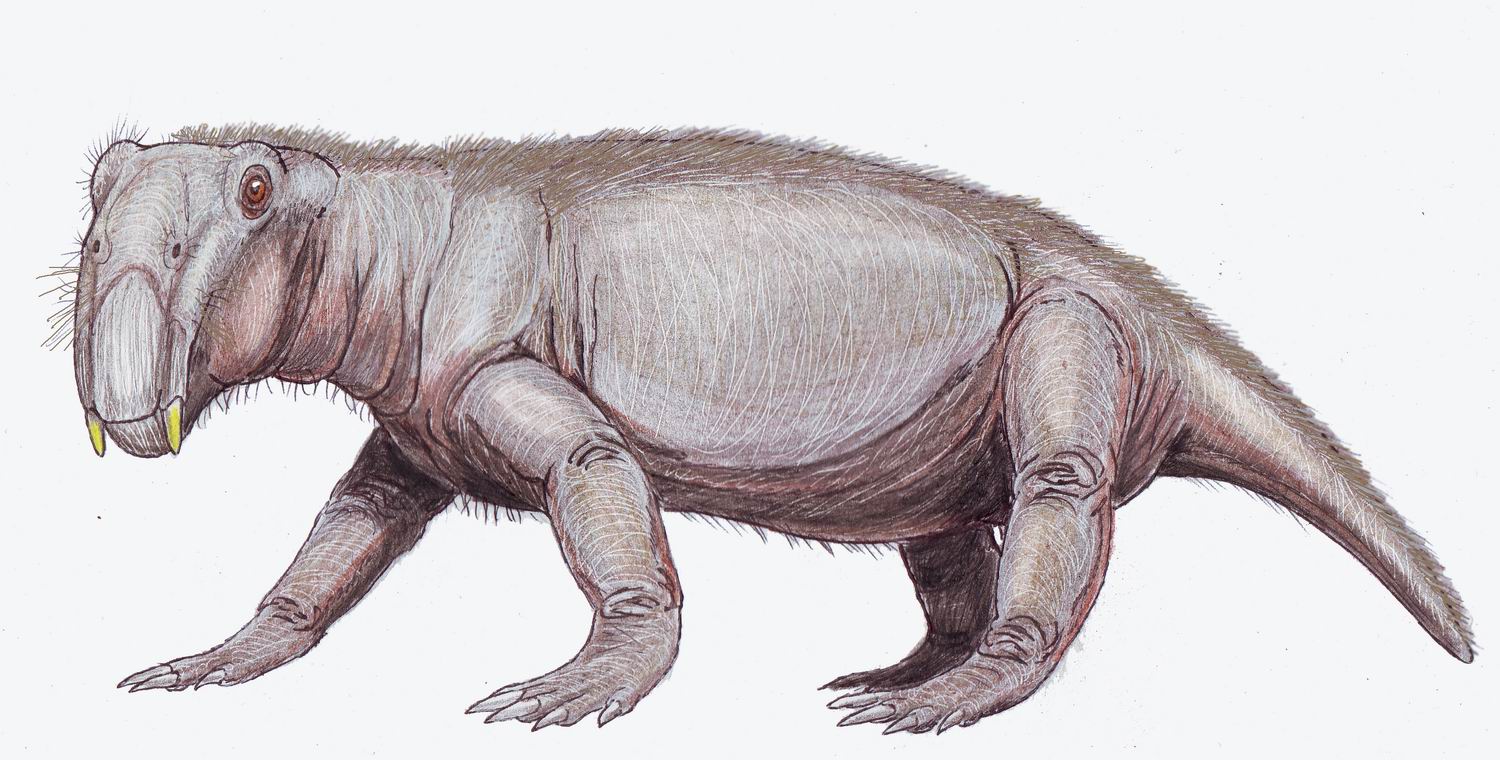
Imagine a pig crossed with a turtle, then given two prominent tusks jutting downward from its upper jaw. That was Lystrosaurus, one of the most successful survivors of the devastating Permian extinction. Lystrosaurus was a small, pig-sized herbivore. Lystrosaurus was a dicynodont. This group of Permian herbivores is known for their bizarre appearance. They had two tusk-like canines protruding from the upper jaws – a strange dentition for an herbivore.
After surviving the Permian-Triassic mass extinction, Lystrosaurus became the most common land vertebrate of the Early Triassic. Lystrosaurus specimens are most abundant in Africa, and have also been found in Asia, Europe and Antarctica. These creatures were so successful that fossils have been found on every continent, providing crucial evidence for continental drift. What’s truly remarkable is that something so odd-looking became the most common land animal of its time.
Armored Vegetarian Crocodiles

The aetosaurs were unique among the early crocodiles since they were herbivorous. Unlike modern crocs, they were vegetarians. And Stagonolepis was one of the most prevalent of the stagonolepids at the close of the Triassic. Its long, narrow body was armor-coated, and it was capable of reaching a length of nine feet. Picture a modern crocodile, but instead of terrorizing fish and unsuspecting animals at the water’s edge, it spent its days peacefully munching on ferns.
These heavily armored plant-eaters looked like someone had crossed a crocodile with an armadillo. Their bodies were covered in bony plates that would have made them nearly invulnerable to predators. Some artist renderings depict a creature which rather resembles a modern armadillo. They dominated herbivorous niches before the large plant-eating dinosaurs evolved.
Sea Monsters That Looked Like Dolphins
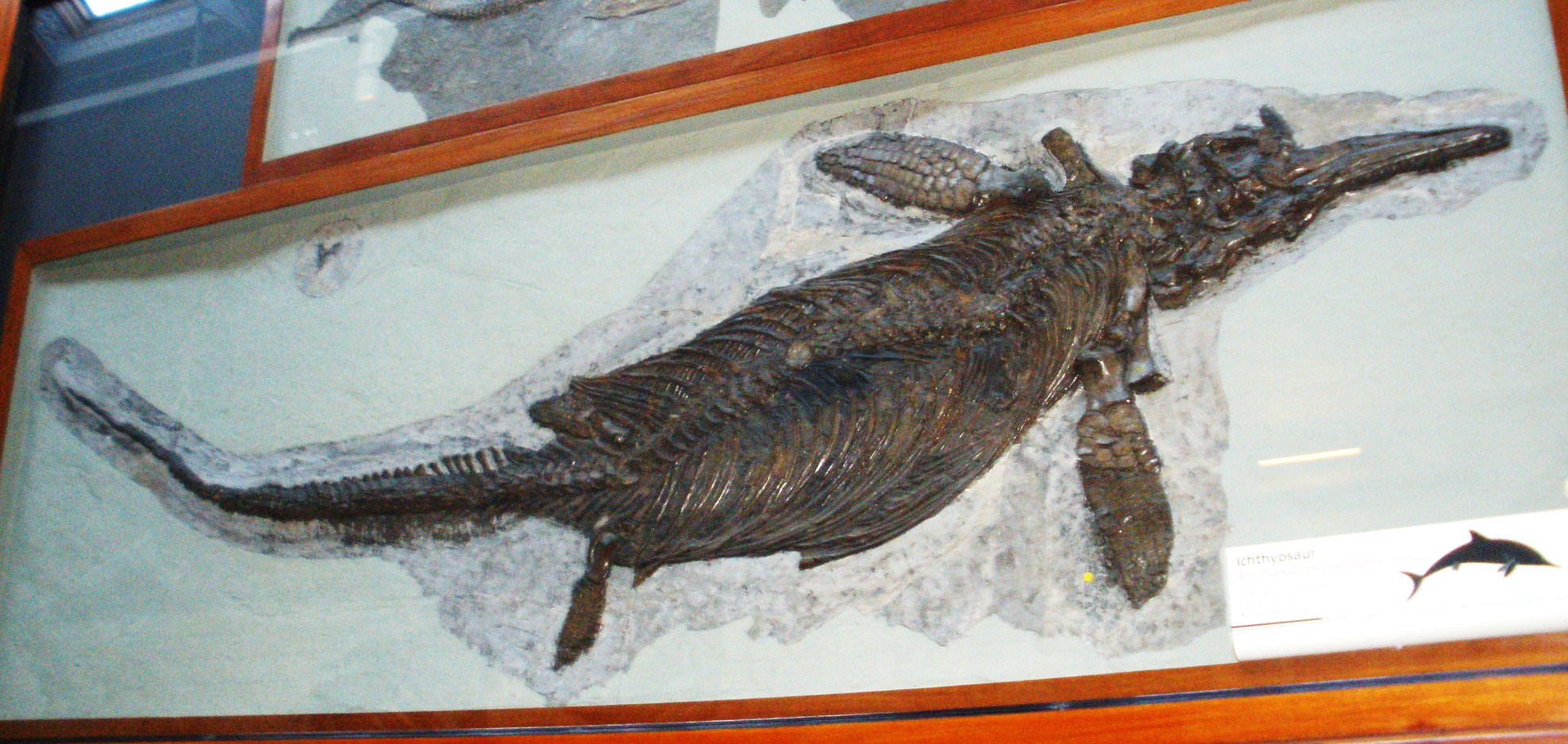
Ichthyosauria is an order of large extinct marine reptiles sometimes referred to as “ichthyosaurs”, although the term is also used for wider clades in which the order resides. Ichthyosaurians throve during much of the Mesozoic era; based on fossil evidence, they first appeared around 250 million years ago (Ma) and at least one species survived until about 90 million years ago, into the Late Cretaceous. During the Early Triassic epoch, ichthyosaurs and other ichthyosauromorphs evolved from a group of unidentified land reptiles that returned to the sea, in a development similar to how the mammalian land-dwelling ancestors of modern-day dolphins and whales returned to the sea millions of years later, which they gradually came to resemble in a case of convergent evolution.
Some of these marine reptiles reached incredible sizes. The gigantic Shonisaurus sikanniensis (considered as a shastasaurus between 2011 and 2013) whose remains were found in the Pardonet Formation of British Columbia, has been estimated to be as much as 21 m (69 ft) in length. Ichthyotitan, found in Somerset, has been estimated to be as much as 26 m long – if correct, the largest marine reptile known to date. They weren’t fish, they weren’t whales, but they ruled the ancient seas with dolphin-like efficiency.
The Giraffe-Necked Swimming Reptile
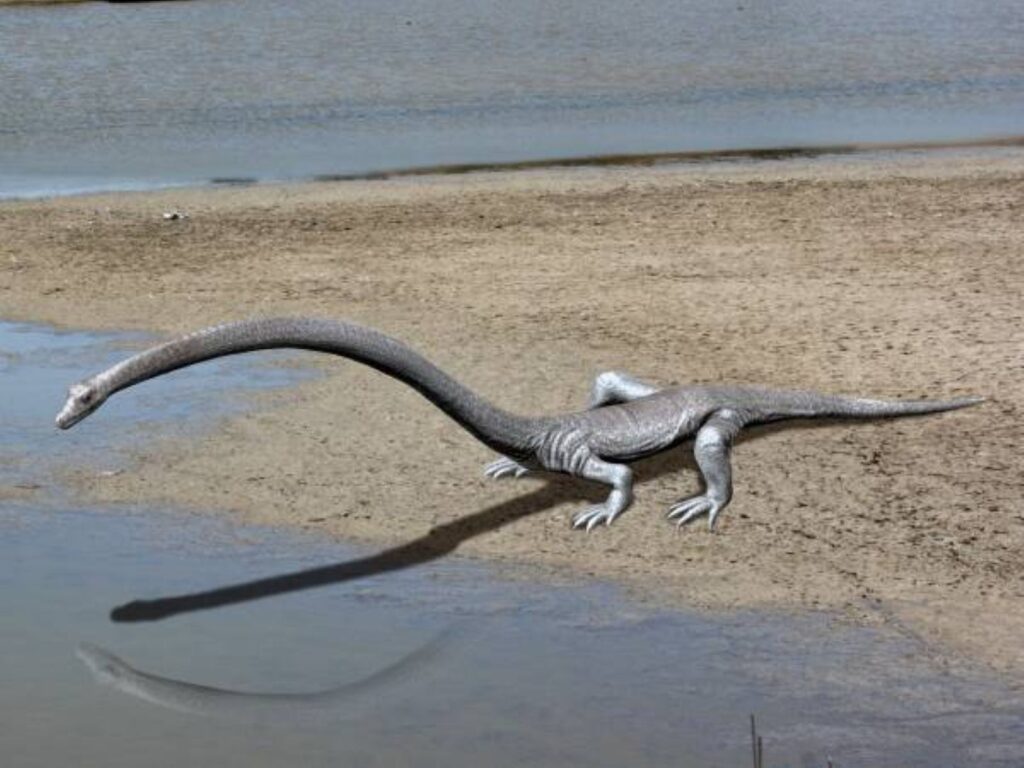
Meet Tanystropheus, possibly one of the most bizarre creatures ever to exist. Tanystropheus was initially misdescribed as a dinosaur, but it was a protorosaur and lived in the Middle Triassic, just before the first dinosaurs. It was long thought to have been too top-heavy to be terrestrial. But more recent studies argue that most of its weight was centred around its body, making it more than capable of walking on land. This creature had a neck longer than its entire body and tail combined.
By far the most famous of these are tanystropheids such as Tanystropheus, known for having necks longer than their entire body. Scientists initially thought it was too awkward to move on land, but we now know it could hunt both on shore and in water. Its incredibly long neck allowed it to snatch fish from the water while keeping its body safely on land, like a reptilian fishing rod.
Gliding Reptiles with Backward Wings
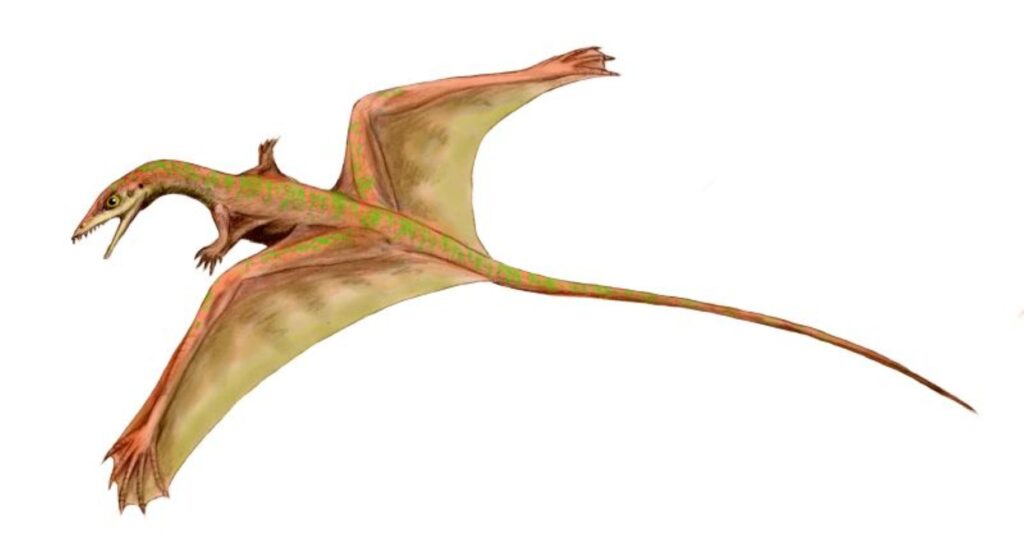
Long before pterosaurs mastered powered flight, some reptiles were experimenting with gliding. Sharovipteryx was one of these early aerial pioneers, but with a twist that defies all logic. Scientists believe Sharovipteryx to be an ancestral link to the winged reptiles the pterosaurs. Not classified as a true pterosaur itself, it lived in the early Triassic period over 240 million years ago. It was a mere one foot in length. It had four appendages which seem to have possessed thin flaps of skin like wings. The two forelimbs were quite short, and the rear limbs were much longer.
What made Sharovipteryx so strange was that its “wings” were attached to its hind legs rather than its front legs, completely opposite to every other flying animal we know. Some theorize this design enabled Sharovipteryx to jump with ease. Paleontologists believe its mode of transportation was more like gliding than true flying. It’s like nature was testing different flight designs before settling on the familiar patterns we see in birds and bats.
The Scale-Backed Mystery Reptile
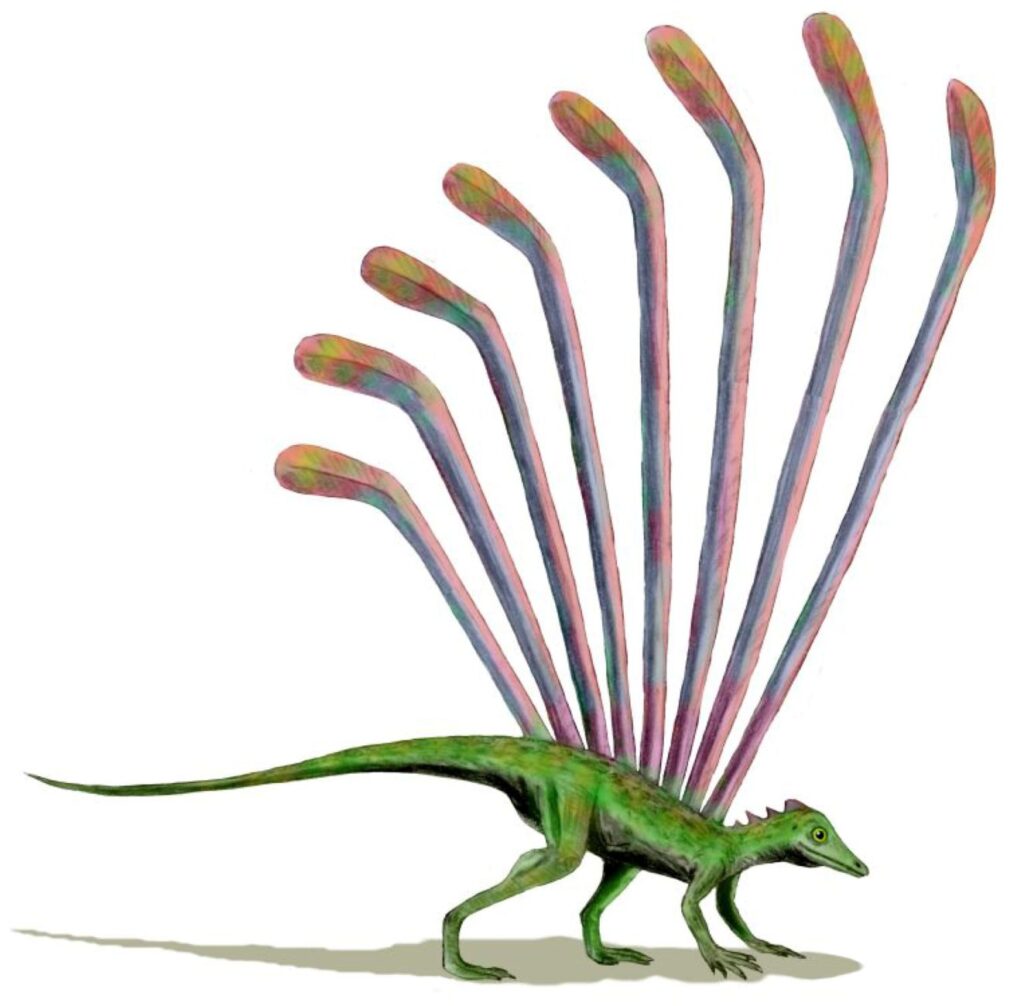
Longisquama might win the prize for most unusual appendages. This small reptile carried something that paleontologists still debate about today. This creature was what has been called a diapsid. The diapsids were a reptilian subclass which eventually would evolve into the most important reptile subclass. But it began as a small group of climbing and gliding reptiles. The diapsids lived in forests located on the supercontinent Pangea during the Triassic period.
The skeleton’s most stunning feature is a double row of long scale-like structures running along its back, forming six to eight pairs. It had one pair of scales for each of its pairs of ribs. The scales had a central hollow vein, like bird feathers. But unlike feathers, Longisquama’s scales seem to have been formed of flat sheets and not genuine plumes. Some scientists think these structures were display features, while others suggest they helped with gliding. Either way, no modern animal has anything quite like them.
Dog-Faced Mammal Ancestors

While dinosaurs were establishing their presence, the ancestors of mammals were thriving in forms that would seem alien today. Cynodonts, literally meaning “dog teeth,” were the successful mammal-like reptiles of the Triassic. Three therapsid groups survived into the Triassic: dicynodonts, therocephalians, and cynodonts. The cynodont Cynognathus was a characteristic top predator in the Olenekian and Anisian of Gondwana. Both kannemeyeriiform dicynodonts and gomphodont cynodonts remained important herbivores during much of the period.
These creatures looked like a cross between a dog and a lizard, with some species sporting elaborate crests or unusual jaw structures. Microgomphodon was a therocephalian that lived in the Middle Triassic. Remains of this dog-like relative of early mammals have been found in southern Africa. It is one of the last-known therocephalians (the group became extinct during the Middle Triassic). They were developing many mammalian features like differentiated teeth and possibly even hair, setting the stage for our own distant ancestry.
Living Fossils That Shared the World
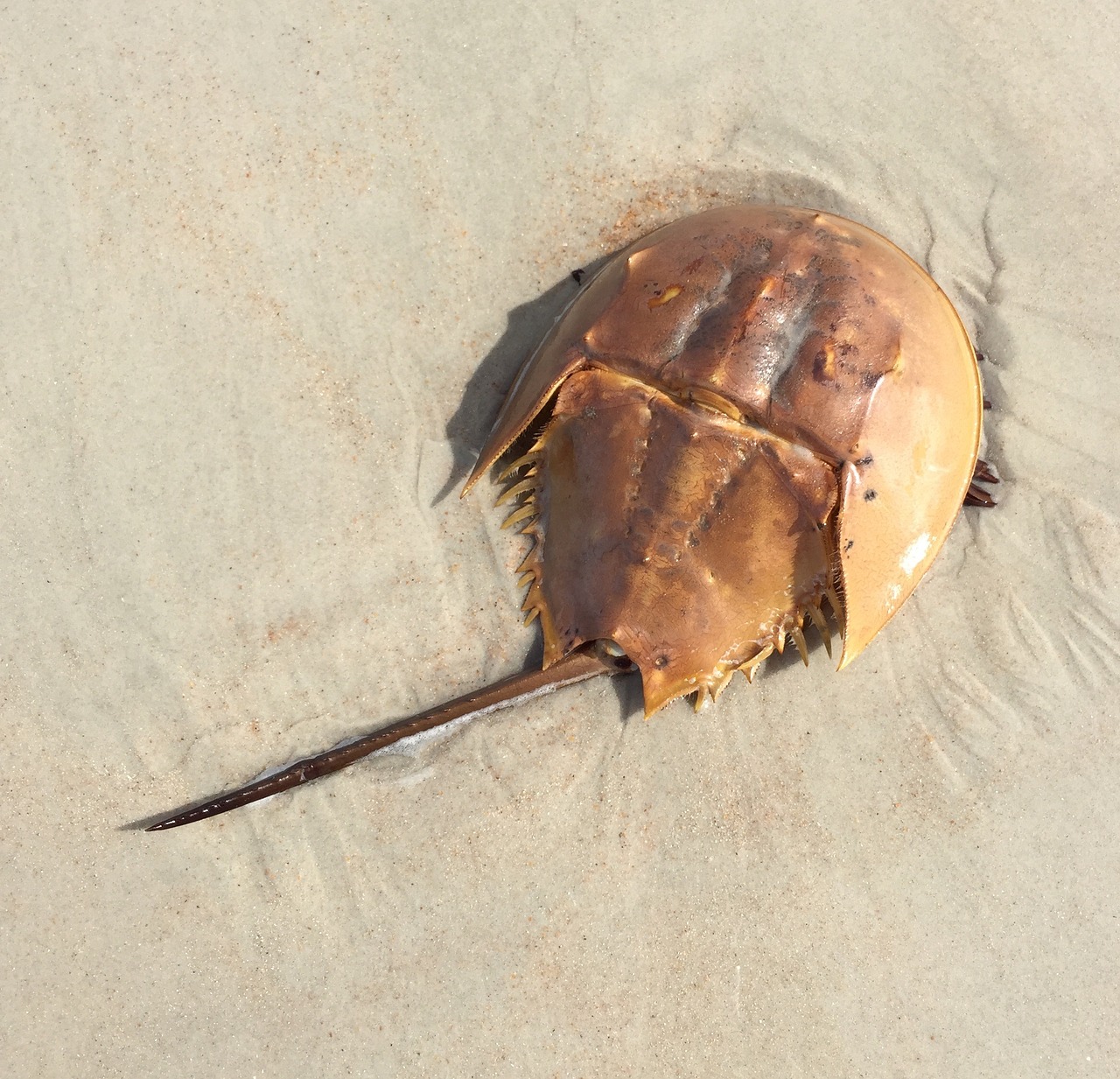
Some creatures living alongside early dinosaurs were so successful that their descendants still live today, virtually unchanged. If any living life form resembles the dinosaur, it’s the crocodilian. You may know that the world was full of dinosaurs 99 million years ago, but did you know that crocodilian creatures were also in abundance? That’s right, the species – including crocodiles themselves – have made a living on Earth for an estimated 240 million years.
Other living fossils include horseshoe crabs, which have remained virtually unchanged for hundreds of millions of years. People don’t call horseshoe crabs ‘living fossils’ for no reason; these arthropods evolve much more slowly than other animals, so their current form is pretty much the same as it would’ve been millions of years ago. Horseshoe crabs have become some of the nature’s most-enduring organisms; much like sharks, they’ve survived at least four of the planet’s biggest extinction events, including the K-T event that extinguished most dinosaur life on Earth. These ancient survivors give us a glimpse into what life looked like when dinosaurs were just getting started.
Conclusion

When we think of the age of dinosaurs, we often imagine them as the undisputed rulers of prehistoric Earth. But the reality was far more complex and fascinating. The early Mesozoic world was a experimental laboratory where nature tried out countless bizarre forms, from backward-winged gliders to vegetarian crocodiles, from giraffe-necked swimmers to tusked pig-lizards.
These strange neighbors of early dinosaurs remind us that evolution doesn’t follow a straight path. It experiments, tries wild combinations, and sometimes produces creatures so odd they seem like the products of a fevered imagination. Many of these experiments failed, vanishing into extinction, while others evolved into forms we recognize today. But for a brief moment in Earth’s history, they shared the stage with the earliest dinosaurs in one of the most diverse and peculiar ecosystems our planet has ever known.
Who would have thought that the world’s first flying vertebrates had wings attached to just one finger, or that some of the fiercest predators were actually vegetarians covered in armor? The next time you see a dinosaur in a movie, remember – they were just part of a much stranger, more wonderful world than we ever imagined.

